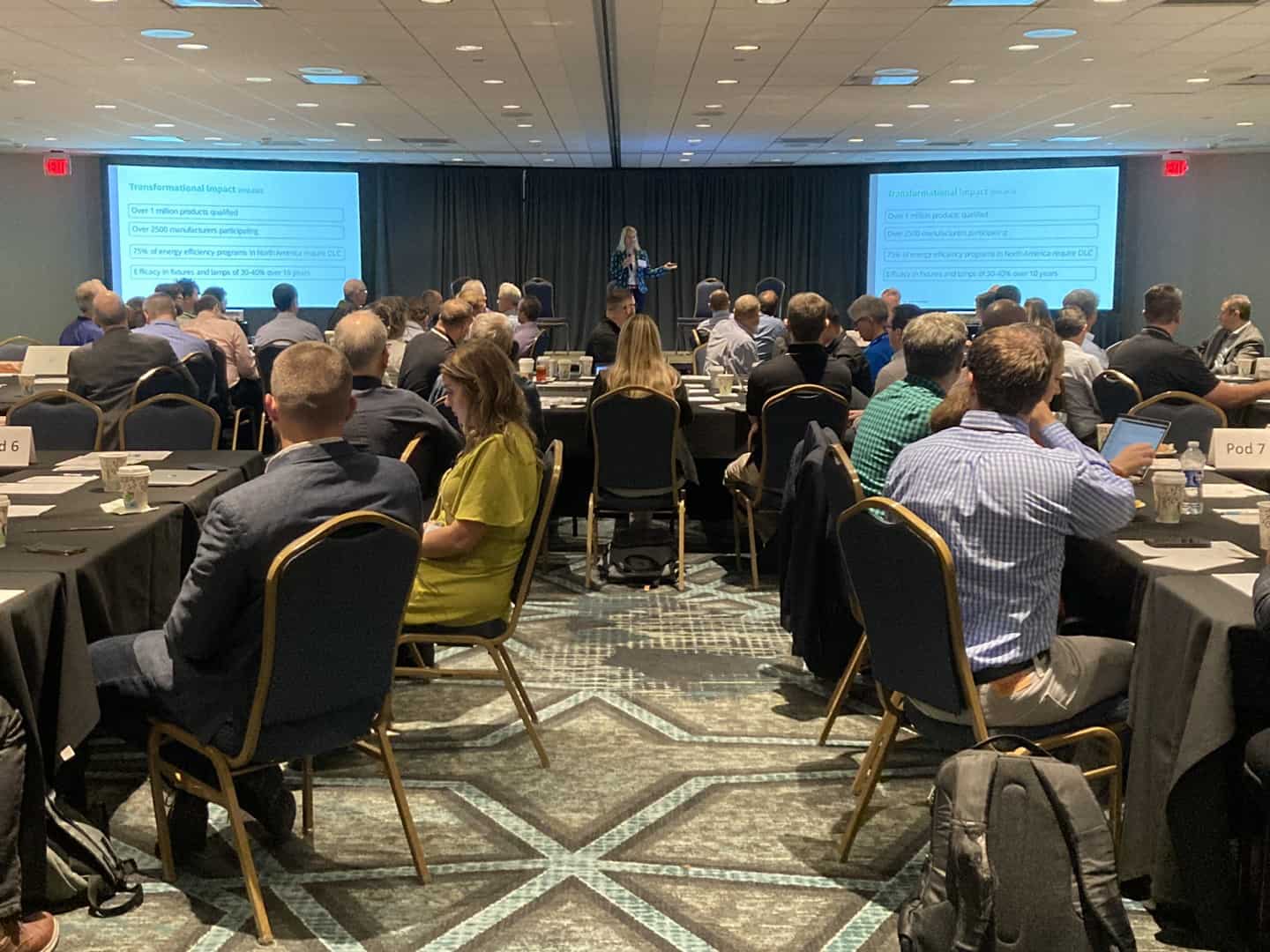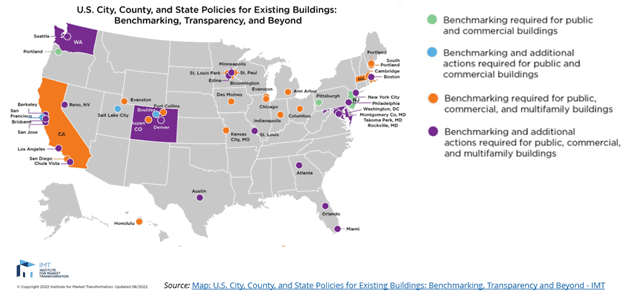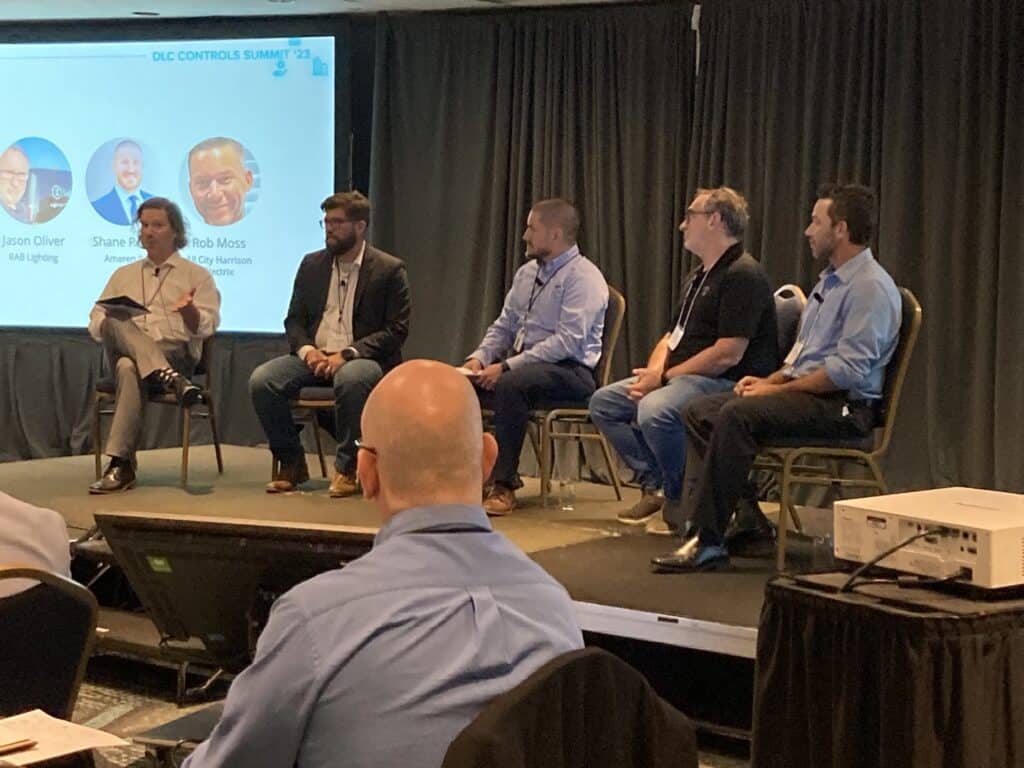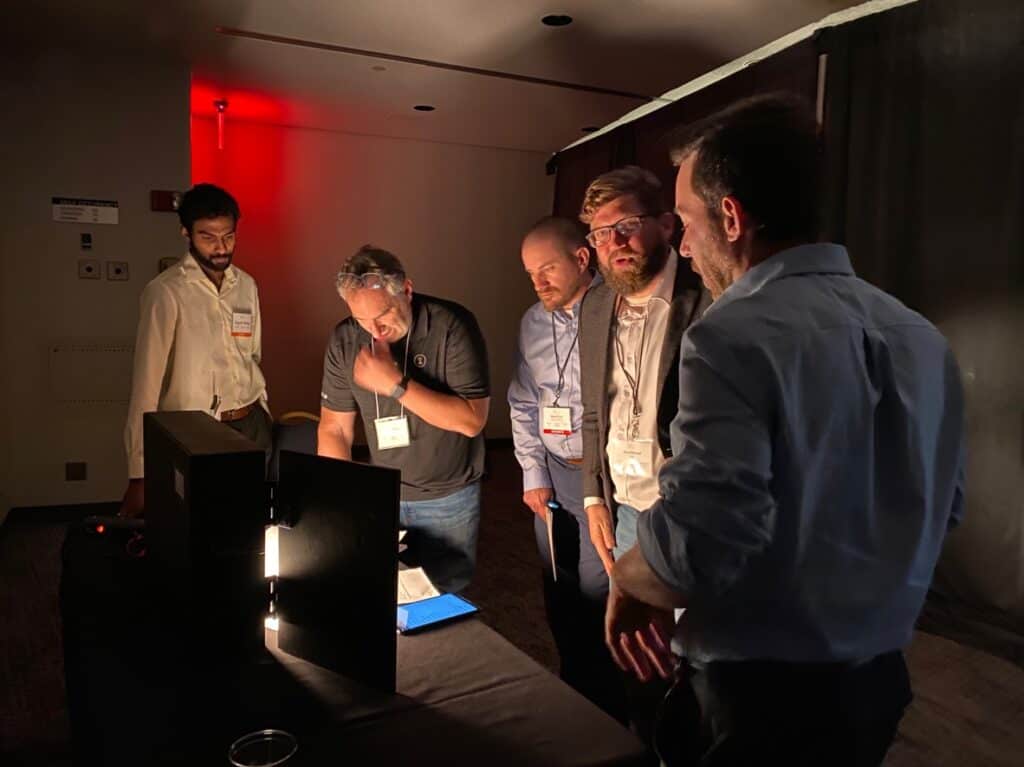This website uses cookies so that we can provide you with the best user experience possible. Cookie information is stored in your browser and performs functions such as recognising you when you return to our website and helping our team to understand which sections of the website you find most interesting and useful.

This year’s DLC Controls Summit was all about unlocking the savings potential of networked lighting controls (NLCs) for decarbonization and energy efficiency. The summit was held at the end of September in Detroit, Michigan, which is a 2030 District committed to reducing emissions in the built environment by 50% by 2030. A mixture of nearly 100 manufacturers, utilities, implementers, installers, ESCOs, and distributors collaborated on complex challenges and discussed how to overcome some of the barriers to success. Attendees also enjoyed a unique NLC escape room experience that was created by the DLC’s Tech Team and John Wilson of Fernhill Shopworks.
One of the major agreements that came out of the summit was that not many people are asking for lighting controls, but with better education they will. It’s difficult for regulators and utilities to incentivize something that does not start with a customer need, so we need to involve building owners in more of these discussions. Once building owners start to pay benchmarking penalty fees for wasting energy, they will be more likely to look into networked lighting controls. However, implementing NLCs is somewhat urgent since first generation LEDs are starting to be replaced. Every lighting retrofit that is installed without controls is a huge missed opportunity to decarbonize.

Here are some of the discussion takeaways from the summit.
Barriers to HVAC and Network Lighting Controls Integration
In commercial energy efficiency, it’s possible to link occupancy controls in a lighting system to the HVAC system. Once integrated, the HVAC system can reduce the energy used in unoccupied spaces – potentially saving up to 30% of the building’s energy usage. DLC research indicates that the least difficult environments for implementation may be large buildings (> 50,000 sq ft) that already have a building management system. But, HVAC work and lighting work are siloed at each point of the project cycle – from design to installation and even at the incentive level. Here are some of the insights on what we need to move forward:
- A template/playbook for success or standard of operations
- Need to clarify HVAC/lighting integration benefits and use cases for easier communication
- Need to define a common language/protocol
- More success expected if we present savings as percentages or dollars saved rather than $/kWh
- Leverage the energy management industry on the HVAC side to include lighting considerations.
- Integration in new construction may be the easiest approach.
- Time of day pricing could help encourage these measures.
- Building owners need to be given access to educational tools so they can play a bigger role and understand that energy efficiency can be cost effective. One good scenario is to install luminaire-level lighting controls (LLLC) now so that lights are “controls ready” and integrate HVAC later when customers have more budget available. However, we heard from attendees that LLLC is often out of stock with distributors, making them less desirable due to the wait.

Networked Lighting Controls for Small Buildings – a Huge Potential
Small buildings (<50,000 sq ft) make up 94% of the commercial buildings in the U.S., and 50% of the commercial square footage. If we could wave a magic wand and implement NLCs in all of these buildings, we’d save about 30 TWh per year – an enormous potential. Small buildings often don’t have building management systems or don’t qualify for custom energy efficiency programs. The building owners are often uneducated about the benefits of NLCs, or think they are too complex. To save energy in these buildings with NLCs, we need:
- Customer-friendly programs, possibly with pre-packaged systems
- A tiered program or combination of prescriptive and custom with some incentive given up front, and some given at a later date when they can prove savings are still happening
- Removal of incentives for uncontrolled lighting, or potential to charge less per kWh for controlled lighting.
- An application like Turbo Tax that could predict energy savings based on building size, building type, system capabilities, and other parameters, which would easily show when NLCs are cost effective for a building.
The DLC is piloting a program called NLC-Local, which is testing out some of these solutions with streamlined processes as well as new tools and reports. The report prototype was used in the escape room exercise later in the summit.
Step into the Shoes of an NLC Installer and Escape the Room
In the escape room challenge, each small group had a tablet with NLC software, an NLC demonstration set-up, and a report of how the system had been installed. (We used 6 different systems from 6 manufacturers.) Participants heard complaints from a frustrated facility manager and did their best to adjust the lighting to fix over lit spaces, occupancy sensor timing, and daylight harvesting in just 10 minutes. Most teams succeeded! We learned some valuable things from this exercise:
- Standard terminology is important, especially when different systems use different terms.
- Facility managers don’t usually communicate about lights accurately, so it is usually harder to resolve problems.
- The report created by the DLC was too large and could be color coded for the different audiences (facility manager, building owner, installer, utility, etc.) The most useful page was the Sequence of Operations (SOO).
- When the report is finalized, video calls with the customer would help them understand the report.

Training, Education, and Awareness of Networked Lighting Controls
Some utilities are all-in on NLC incentives and programs, but more support is needed to maximize energy savings and decarbonization. Ameren IL, Consumers Energy, and DTE also have established NLC programs and case studies. Utilities should anticipate the portfolio changes that are coming by developing NLC measures now and eliminating incentives for uncontrolled lighting. Trade allies also need to be aware that controls will be a big opportunity and they will need training. At the core of this opportunity is customer education and generating the demand for NLCs from their perspective. Awareness will be the key to rolling out these projects and future-proofing energy efficiency and decarbonization for many years to come.
Further Reading:
© 2023 DesignLights Consortium. The DesignLights Consortium is a project of Efficiency Forward, Inc., a non-profit 501(c)3 organization. Privacy Policy Terms of Use
